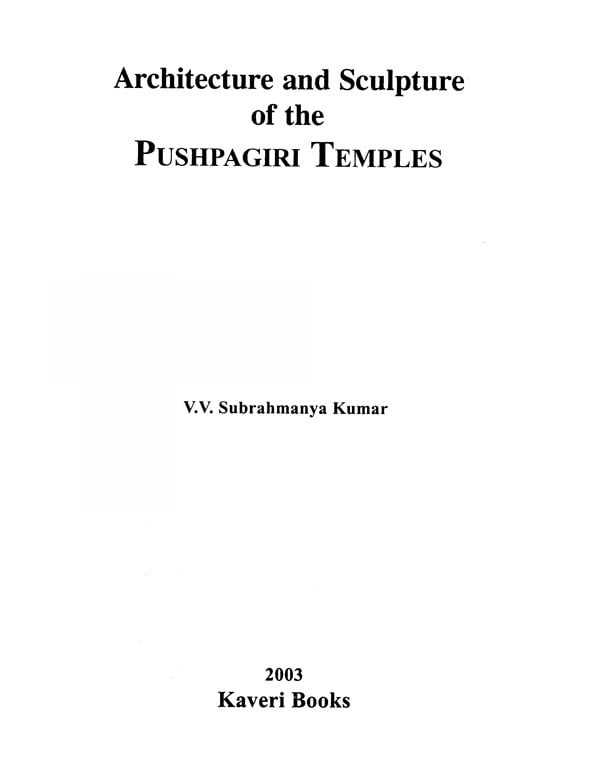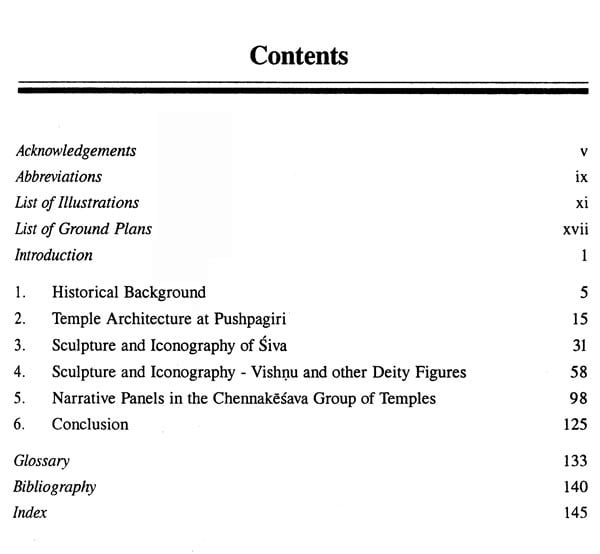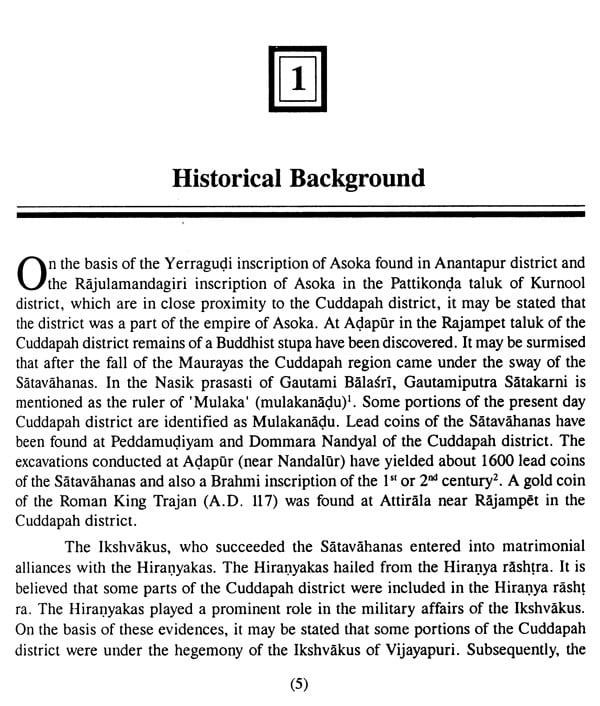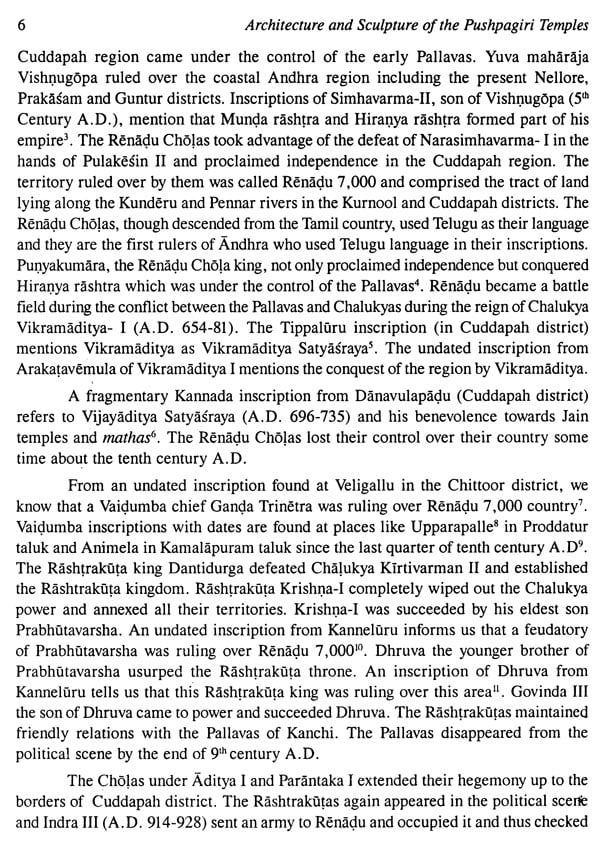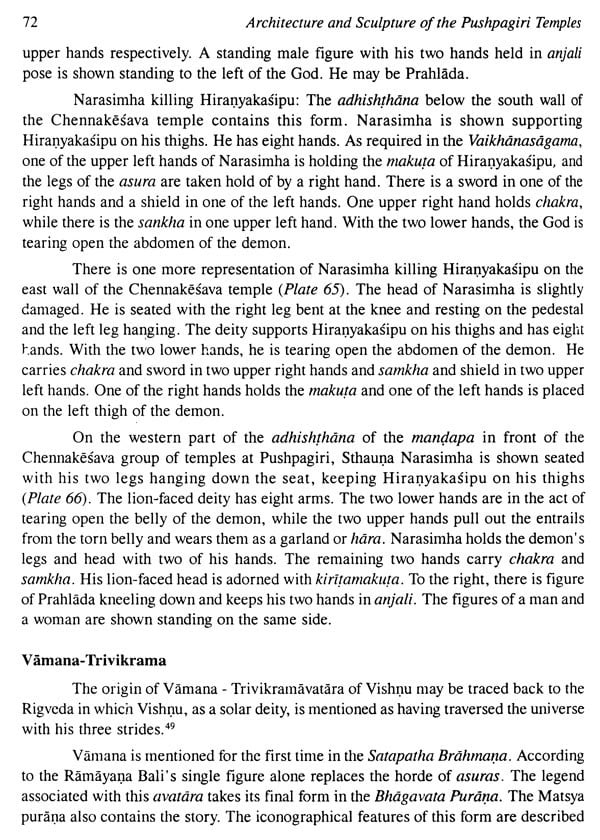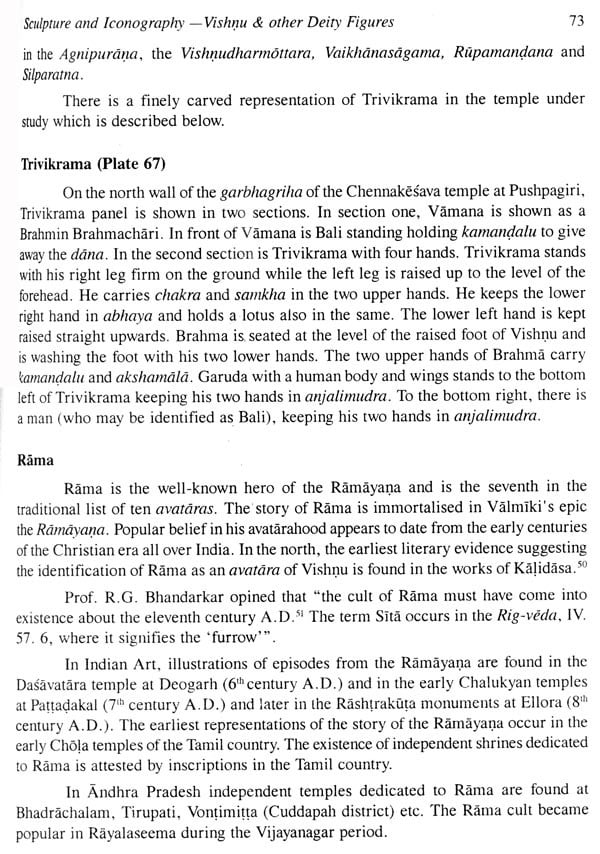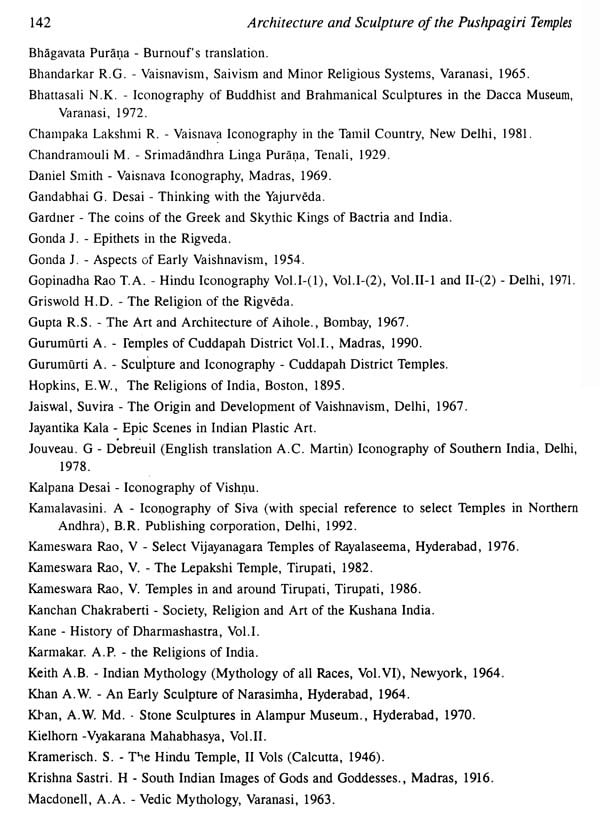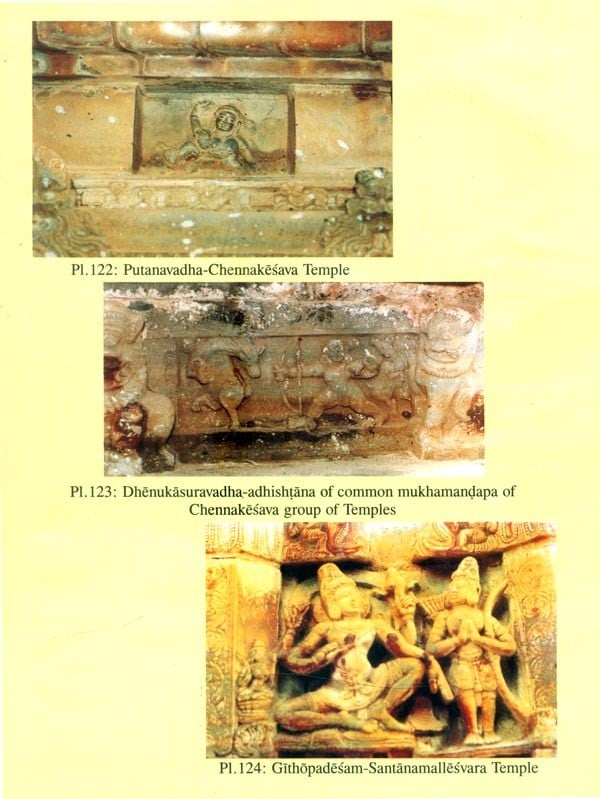
Architecture and Sculpture of the Pushpagiri Temples
Book Specification
| Item Code: | AZG312 |
| Author: | V.V. Subrahmanya Kumar |
| Publisher: | Kaveri Books |
| Language: | ENGLISH |
| Edition: | 2003 |
| ISBN: | 9788174790507 |
| Pages: | 230 (Throughout Color Illustrations) |
| Cover: | HARDCOVER |
| Other Details | 10.00x7.50 inch |
| Weight | 690 gm |
Book Description
This book makes a highly informative and useful contribution to our knowledge of the architectural, sculptural and iconographical achievements of the Vijayanagara artists.
Illustrated with one hundred and twenty seven photographs and three ground plans, this is a very useful book to Museums, Archaeologists, Historians, Research students and others interested in the subject.
Dr. Kumar has contributed several research papers to leading scholarly Journals, Seminars and annual sessions of History Congresses. He specialises in Temple Architecture, Sculpture and Iconography.
The village is situated on the right bank of the river Pennar and the Pushpagiri hill on its left bank derives its name from the hill Pushpagiri lying on the other side of the river Pennar. Pushpagiri is also called Sumagiri. A rivulet flowing towards south joins Pennar at Pushpagiri. An inscription of 12th Century A.D. mentions this place as 'Panchanaditirtha'.' It may be surmised that Kusumalayam mentioned in the Pinakini Mahatmya as one of the holy tirthas is probably Pushpagiri. The hill Pushpagiri is mentioned in the Brahmanda Purana' and Vayu Purana. The second apsidal temple inscription of Nagarjunakonda mentions the Prakrit form of Pushpagiri as Pushpagiri. A Rashtrakuta inscription of Krishna Kannihadeva (Krishna III) mentions the place as Pushpagiri and that it is the south gateway of Sriparvata. The "Pushpagiri agrahara" is mentioned in an inscription dated S. 1442 (A.D. 1520) found at Pushpagiri. records that certain Dommaras gifted dommaripannu received by them from kapus f rearing flower garden and for dipärädhana (lighting lamp) in the Chennakesava temp at Pushpagiri on Kartika Suddha Paurnami in the cyclic year pramadi.' Pushpagir the seat of the matha which is said to have been established by Sri Sankaracharya advocate his philosophy of Advaita.
As many as twenty eight temples were noted at Pushpagiri in the first qua of the twentieth century. Some of them were in ruins.
**Contents and Sample Pages**
